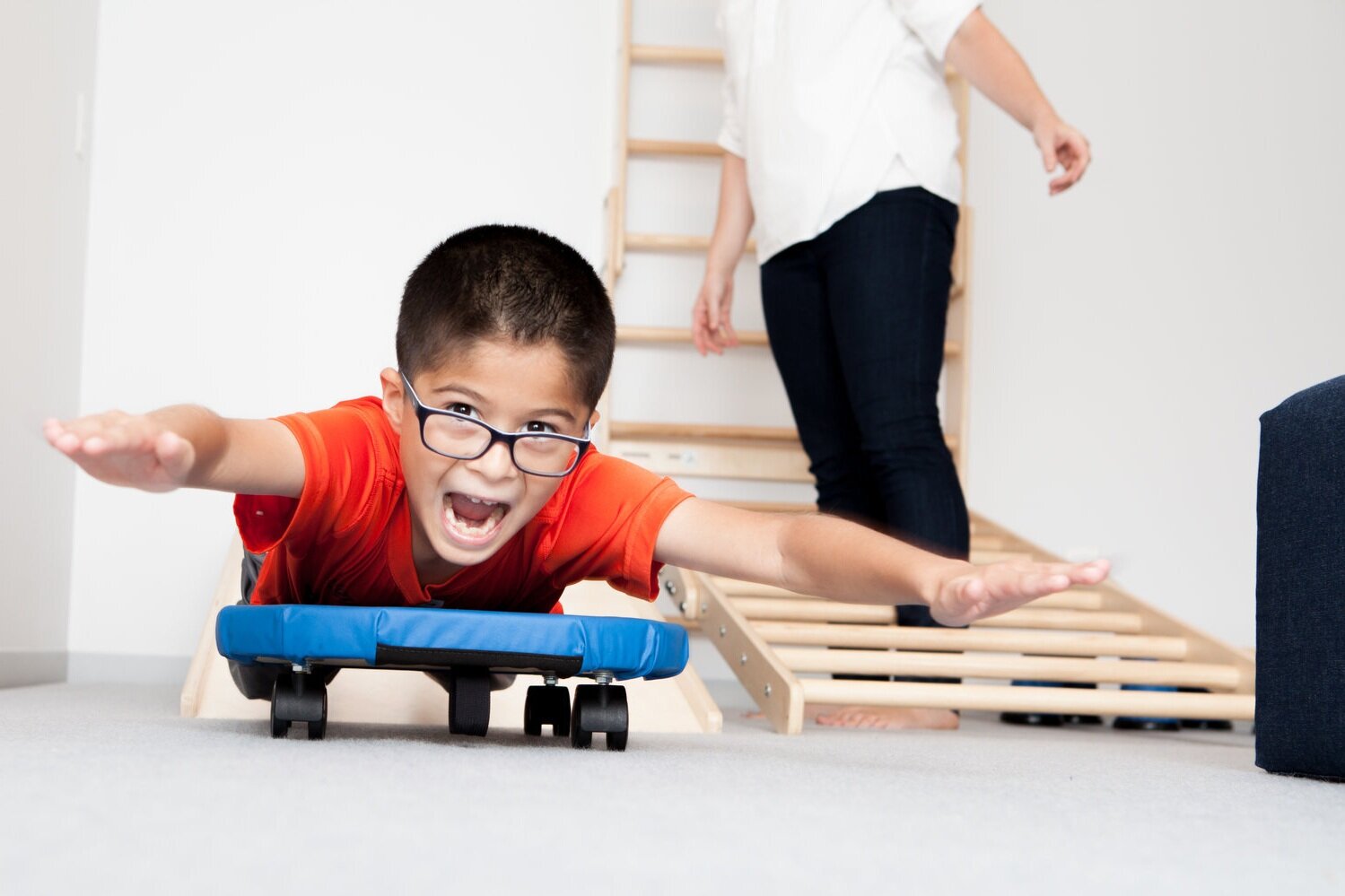
OCCUPATIONAL THERAPY
FOR KIDS
What is Pediatric Occupational Therapy?
Occupational therapy is a health profession in which therapists help people participate in the meaningful, age-appropriate activities that make up their daily lives (i.e. their “occupations”).
From infancy to adolescence, your child’s occupations are constantly changing, from simply feeding, moving and sleeping as an infant to handwriting, following directions and self-regulating as a student—and innumerable other activities before your child becomes an adult.
Our pediatric occupational therapists help your child participate in his or her occupations by:
recommending task adaptations and environmental modifications
providing direct therapy to your child at our clinic and sensory gym
working with you and your child’s caregivers, educators and health professionals to encourage transfer of new skills into appropriate environments
Key Themes of OT for Children
Child Centered
We engage your child in the therapy process by building a rapport and employing activities that are meaningful to your child. Child engagement creates intrinsic motivation with which your child is more likely to focus on an activity, problem solve, and integrate new skills in appropriate environments.
Family Focused
We recognize that a child’s family knows their child best and wants the best for their child. We engage with family members to understand their lives, strengths, challenges and routines. We then tailor our services to meet the needs and objectives of each child’s family and do not impose a “one size fits all” approach.
Evidence Based
Occupational therapy is a science-driven practice, supported by evidence of the effectiveness of the therapy process. Our practice is based on the integration of critically appraised clinical research with our therapists’ clinical expertise and our clients’ needs and objectives.
The OT Process
Initial Consultation
Our process begins with a casual conversation between you and one of our therapists during which you can describe your needs and concerns and we can discuss potential occupational therapy options for your child. We can also collect information regarding your insurance plan and discuss payment strategies for your child’s therapy.
Based on our conversation, next steps would likely include collecting additional information about your child in our intake forms, working with your insurance plan to confirm your benefits (which The Therapy Nest is happy to handle to the extent your plan allows), and obtaining a prescription from your child’s doctor, if necessary.
After our initial consultation, we may also determine that another service may be appropriate, in which case we would happily make referrals to other health professionals.
Evaluation and Written Report
Occupational therapy begins with an evaluation to determine your child's strengths and areas of difficulty. Evaluations typically consist of therapist observations in our clinic, parent questionnaires and interviews, and, possibly, therapist observations in your child’s school.
To determine your child’s performance in specific areas, our evaluations also include standardized assessments, which have uniform procedures for administering and scoring. Standardized assessments allow us to determine appropriate therapy plans and monitor your child’s progress during therapy.
Our evaluations generally include written reports with a description and analysis of your child’s performance skills and patterns, activity demands, results of standardized assessments and other relevant factors. Written reports also typically describe appropriate therapy approaches, potential task adaptations and environmental modifications, and specific goals for your child.
Therapy Sessions
Most children attend 30-60 minute therapy sessions at our clinic once or twice per week. Each therapy session is based on the analysis and goals described in your child’s written evaluation and is designed to help your child meet his or her individual goals.
A key element of our therapy sessions is creating “just right” challenges for your child, which we accomplish through ongoing assessment of your child’s functional performance, participation, and quality of life.
As your child progresses during therapy sessions, we are also able to continue collaborating with you, your child’s caregivers, educators and health professionals and recommend appropriate task adaptations, environmental modifications, and home activities.
